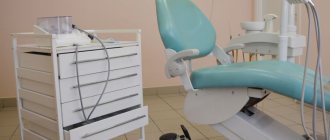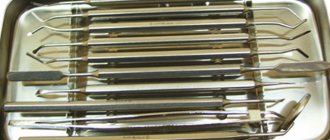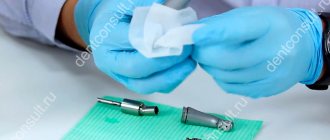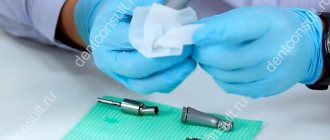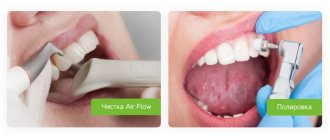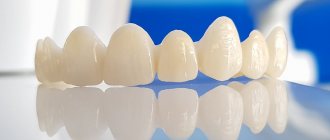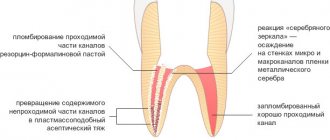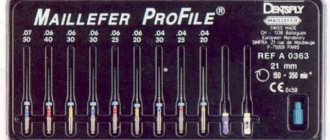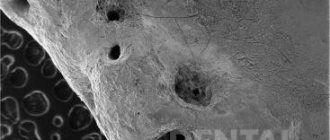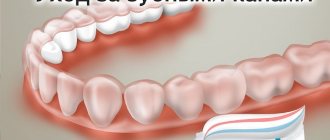Sterilization is the process of complete disinfection of instruments, during which all microorganisms, as well as their spores, are killed.
Everything that comes into contact with the patient’s biological fluids and is used repeatedly is subject to sterilization. Human immunodeficiency virus, hepatitis B and C, malaria, typhus – this is an incomplete list of diseases that are transmitted through blood. Sterilization is necessary to prevent their spread.
At the Karmen-Med clinic, all instruments are subject to mandatory sterilization. Regardless of the manipulation performed, the dentist always has only clean instruments in his hands. Our patients do not have to worry about their health.
Sterilization methods used in dentistry
Sterilization is the general name for any disinfection process, regardless of the method of removing microorganisms. There are several such methods:
- Mechanical – removal of microorganisms by mechanical action. For example, liquids are passed through special filters that retain particles of certain sizes. Microorganisms can be mechanically removed from objects or surfaces by cleaning, wiping, and sweeping. The method is unreliable and is used in medicine only as a preliminary step.
- Biological - sterilization with antibiotics, is rarely used because it does not affect all pathogens.
- Chemical is a method of disinfection by applying special solutions or gas treatment. Gaseous ethylene oxide or formaldehyde is used as the latter. Acids with oxidizing agents, detergents, halogens and aldehydes are used as solutions. Most are known antiseptics, such as chlorhexidine or betadine. Used for processing cabinets, surfaces, and apparatus.
- Microwave - in this case, disinfection occurs in a special microwave sterilizer. Microorganisms die under the influence of an electromagnetic field. The method is rarely used in medicine.
- Physical - a method that includes exposure to temperature, pressure or ionizing rays. The most commonly used sterilization is high temperatures (in a dry-heat oven) or high temperatures and pressure (autoclaving). Most tools and materials can be cleaned using these methods. Ionizing radiation is used in factory conditions in the manufacture of sterile products.
Clinical examples. Video
Minimal invasion: micro-mirror
Initial situation: missing 3.6 tooth, preparatory stage before implantation, sanitation of the oral cavity. A carious change in the tissues of the proximal surface of the 3.5 tooth was revealed (Fig. 10-11).
Fig. 10. Clinical situation
| Fig. 11. Revision of the proximal surface of tooth 35 using a micro-mirror |
Preparation: It is not possible to prepare only the proximal surface with a conventional handpiece, since there is not enough space to accommodate the collet and bur.
The use of an ultrasonic nozzle and a micro-mirror allows for minimally invasive treatment of the approximal class II cavity without bringing the preparation to the occlusal surface (Fig. 12-15).
| Fig.12-15. To remove carically damaged tissues, ultrasonic approximal attachments are used; for visual control of the cleanliness of the preparation - micro-mirror MEGAmicro (HAHNENKRATT, Germany) |
Direct restoration: surface etching with 37% H3PO4 followed by adhesive treatment (Fig. 16, 17); applying a flowable composite to the bottom of the cavity using a special nozzle (Fig. 18, 19); layer-by-layer application of a dual-curing composite, activation of light polymerization and finished composite restoration of 3.5 teeth (Fig. 20-22). Visual control is carried out through a micro-mirror.
| Fig. 16, 17. Etching with 37% H3PO4 and adhesive preparation of the cavity of the 35th tooth | |
| Rice. 18, 19. Special nozzle for applying flowable composite |
| Fig.20. Adding composite | Fig.21. Light polymerization |
Fig.22. Finished restoration
To learn the technique of minimally invasive caries treatment using a micro-mirror, watch the video
To see or not to see? Mirror EverClear
When carrying out various dental procedures (especially when working with ultrasound instruments), it is a great inconvenience to have to constantly interrupt the treatment process in order to restore a clear view of the surgical field and clean the mirror from water splashes and debris (Fig. 23 a-c).
| Fig.23 a-c. Increasing low visibility of the surgical field |
The special EverClear mirror from I-DENT provides dental practitioners with continuous visual control during any treatment procedure, which is especially important when using ultrasonic instruments (Fig. 24). Accordingly, reception time is reduced and work productivity increases.
Fig.24 a, b. EverClear mirror features:
|
Clinical demonstration: preparation of a deep carious cavity of tooth 1.6 using an EverClear mirror (Fig. 25 a-c).
| Fig.25 a-c. Maintain a clear view of the surgical field | ||
To compare the quality of visual control over the work process when using a splash-proof mirror, watch the video
Stages of sterilization
Before proceeding directly to sterilization, it is necessary to carry out preliminary preparation. Tools and materials are washed, cleaned, dried - and only then sterilized. The processing steps for the toolkit are as follows:
- Disinfection. At this stage, the items to be disinfected are placed in a disinfectant solution. Exposure time depends on the solution and type of instrumentation.
- Washing. Tools and materials are removed from the solution, washed under running and then under distilled water. Some instruments can be cleaned mechanically using brushes. If the instrument has nicks or nicks, it is recommended to disinfect it and wash it in a special apparatus under ultrasound.
- Drying. The instrument is treated with steam and waited until it dries completely.
- Final sterilization. The stage depends on the method of processing the tools. Items are placed in a special package or container and then sterilized. There must be an indicator near them that will show that the required temperature or pressure has been achieved. After all stages, the instruments are stored under ultraviolet lamps or in individual packages so that they remain sterile.
Magnification and lighting
Dental treatment using a magnifying glass or head-mounted optics (Fig. 1) has significant advantages over the “naked” eye. In endodontics, Harry Carr was the first to propose the use of an operating microscope: in addition to magnification, the microscope illuminates the object better than a traditional dental lamp (Fig. 2).
Fig.1. Zeiss glasses
Fig.2. Optimizing object lighting
Today, microscope-oriented practice (Fig. 3) is the main priority and the main trend in the development of modern dentistry, the main principles of which are preventive and minimally invasive methods.
Fig.3. OPMI pico microscope from Carl Zeiss equipped with a beam splitter, video adapters and a camera
Carrying out endodontic and restorative manipulations using an operating microscope (Fig. 4, 5) increases the likelihood of successful treatment and optimizes the dentist’s work process.
Ergonomics: • Comfort for the eyes. • Comfortable position. Video!
| Rice. 4, 5. At a dental appointment in microscope-oriented practice, 90% of manipulations are carried out indirectly | |
Watch the video!
Features of working with different dental instruments
In dental practice, working with instruments involves distinctive features of sterilization. Instruments vary among dentists of different specializations.
- Endodontic instruments. Most endodontic instruments cannot be sterilized. They are disposable. After use, they must be disinfected and disposed of as biologically hazardous waste. Disinfection is necessary to ensure that pathogenic microorganisms cannot penetrate from the instruments to the surfaces with which they will come into contact. For example, they did not contaminate the soil when dumping hazardous waste. For each patient, they take their own individual disposable instrument. Packages are usually opened in the presence of the patient.
- Therapeutic dentistry. Instruments undergo all stages of sterilization. The only difference is the sterilization of dental handpieces. They cannot be soaked in a disinfectant solution. Therefore, the tips are manually washed with a solution, dried, lubricated, packaged and sent to an autoclave.
- General purpose kits. The disposable components of such kits are used personally for each patient, then disinfected and disposed of. But most tools are reusable. They are processed according to all stages of pre-sterilization treatment, and then placed in a dry heat or autoclave. Metal tools are usually heat treated. Objects with non-metallic parts - by pressure.
Infection safety in a dental clinic: what you need to know
Dentists state that when visiting the clinic, patients increasingly ask questions about how instruments are sterilized and whether they are reliably protected from the transmission of infections. The expert of the Sibmeda portal on sterilization issues is Natalya Zubareva, chief physician of the Zubareva Dental Clinic.
Modern tendencies
“The topic of infection safety in dentistry is very important, so some improvements are constantly appearing in this direction
, - says Natalya Nikolaevna.
“ For example, the majority of instruments in dentistry today are disposable: these are saliva ejectors, gloves, packaging materials, various napkins for processing, separating plates, and so on.”
Each dental clinic today is obliged to comply with the requirements of the Anti-AIDS-Antihepatitis program, which provides for the use of a certain list of disposable consumables.
Changes have also affected modern dental units. If previously they were treated with disinfectant solutions only from the outside, today the entire system of hoses that fit the tip is subject to treatment to prevent the colonization of bacteria.
SanPiNov requirements are constantly becoming more stringent. This can be clearly seen if we compare the requirements of today and, say, 20–30 years ago.
Natalya Nikolaevna, a dentist with 30 years of experience, remembers this time well.
“When we first started working, there was one handpiece for 12-14 people per appointment, which was prescribed to be wiped with chloramine after each patient. Doctors worked without gloves. Now, for each patient, there are several individual tips, a sterile bag with instruments, a sterilizer for supplying water, and so on.”
, says the specialist.
Quartz lamps in offices have now, according to modern standards, been replaced by modern bactericidal devices that are harmless to people and constantly work in the presence of patients and doctors. “ There is no need, as before, to go out, quartz the room, and then be sure to ventilate it. Now devices designed for a specific area and located in each office purify the air throughout the day.”
, explains Natalya Nikolaevna.
Moreover, if you compare Russian and European infection safety standards, in Russia they are more stringent. The sterilization process includes several stages.
Stages of sterilization
After use, all instruments intended for manipulation in the oral cavity are brought to the sterilization room by assistants and soaked in a disinfectant solution for a certain time. This is the stage of preliminary disinfection, during which living pathogens of infectious diseases are destroyed.
There is a timer on the container with the disinfectant solution, according to which the drug is changed in a timely manner. Only after preliminary disinfection are the instruments washed under running water - thus, the infection does not enter the sewer.
“The types of disinfectant solutions used should be changed every 3 to 5 months so that microorganisms do not develop resistance to these disinfectants. We strictly observe this rule: we use several types of disinfectants, which we change at regular intervals,”
– says the head doctor of the clinic.
The second stage is pre-sterilization treatment in an ultrasonic bath with a disinfectant solution. As a result, protein and fatty contaminants, as well as medication residues, are cleansed. After processing, the instruments are washed and dried again. After this stage, they are already considered clean, so they are packaged in individual bags.
The third stage is sterilization in an autoclave. The packages with instruments have special indicators that change color after sterilization: pink stripes turn gray. Color change is possible only at a temperature of 134 degrees and an atmospheric pressure of two atmospheres. If the temperature or pressure is lower, the indicator will not change color.
After autoclaving, the instruments are placed on a quartz shelf where they are stored. The packed sterile package can be used for 10 days.
Sterilization of tips
For handpieces - elements of the dental unit into which the bur is directly inserted - a special sterilization process is provided. “We use a lot of different handpieces – ultrasonic, contra-angle, turbine. They cannot be soaked in a disinfectant solution, since modern high-tech tips are made of a certain alloy and have a complex structure. They are processed in a different way."
– explains Natalya Nikolaevna.
First, immediately after use, the plaque that remains after use is mechanically and chemically removed from them. For this purpose, special wipes soaked in a special disinfectant are used. After a 15-minute exposure in a napkin, the tips undergo pre-sterilization preparation: they are processed in a special “Quadrokey” apparatus, where they are purged with oil and a special disinfectant solution. Moreover, each tip goes through as many processing cycles as required.
“Quad key for tip processing is our own initiative
, - says Natalya Nikolaevna.
– According to SES standards, this stage is not required.
The tips can be cleaned with a tissue and then transferred to the autoclave. But since we have been working with special equipment from the German company KAVO for many years, our partners recommended that we purchase this device. It allows you to perform additional mechanical and chemical pre-sterilization treatment of the tip, guaranteed to remove from it all microparticles that could have entered during tooth preparation, while additionally treating the tip from the inside.” Although modern tips, according to the expert, are designed in a special way, preventing the leakage of blood and saliva in order to prevent the transmission of infection to the next patient. But in matters of infectious safety, it is better to play it safe, the chief doctor is sure.
After processing, the tips, either packaged or unopened, are sterilized in an autoclave or in a MELAG device specially designed for this purpose. It has a high-speed sterilization mode in 15 minutes, which is very important for doctors working at receptions.
Each of the stages of sterilization is very important, not a single one can be skipped. “ You can be completely sure that all the viruses have died only after the last stage of sterilization - autoclaving at a temperature of 134 degrees, a pressure of two atmospheres”
, notes the doctor.
Constant control
To control the quality of sterilization, in addition to indicators on the bags, special tests (intests) are provided, which are placed in autoclaves. Employees keep logs in which tests are posted, indicating the date and time of autoclaving.
Issues of infection safety in a dental clinic are supervised not only by medical workers of the medical institution itself, but also by specialists from regulatory authorities.
“Our network of clinics has an agreement with the SES. Specialists come to us regularly, take swabs - from tables, from instruments, air samples, take away packages of sterile instruments, check them for compliance with standards, and control the level of illumination. We regularly undergo such checks – and rightly so. Control is always needed"
, - the head doctor is sure.
When patients ask questions about sterilization, Natalya Nikolaevna and other doctors at the clinic explain and show everything in detail.
“Issues of infection safety in dentistry are priority, fundamental issues. After all, the quality of all work depends on the initial stages - how prepared and worked they are. We ourselves are treated here, our children are treated here. There are no special conditions for employees and their relatives: we take the same tips from the autoclave, the same tools."
, says the chief physician.
What is important for patients to know?
When visiting a dental clinic, you need to pay attention to the cleanliness of the office, the use of disposable consumables - gloves, napkins and a number of others. It is also important that the package with sterile dental instruments is opened directly in front of the patient.
“We also always show patients the packaging with the indicator color changed. Although we have a lot of regular customers who refuse to watch because they completely trust us.”
,” shares Dr. Zubareva.
She is convinced that patients have no risk of contracting any infections when visiting a dental clinic that complies with all modern standards.
Earlier, Elena Ikonnikova, a periodontist at the Zubareva Dental Clinic, spoke about symptoms, risk factors and modern approaches to the treatment of periodontitis.
Zubareva Dental Clinic:
st.
Ovrazhnaya, 10, (383) 349-97-97; st. Families Shamshin, 18, (383) 223-33-66; www.zub-nsk.ru
There are contraindications. Specialist consultation is required.
The essence of proper oral hygiene
Proper oral hygiene is a rather complex process. On the one hand, you can brush your teeth twice a day, morning and evening, but this is not enough, since a toothbrush removes up to 80% of plaque. The rest accumulates between the teeth, in hard-to-reach places on the sides. Dentists also recommend using dental floss, which will improve the percentage of plaque removal by another 10%.
Innovative technologies are interfering with the process of oral hygiene, so it would be a good idea to purchase electric brushes. However, with all this, it is simply impossible to remove plaque or food debris from the oral cavity 100%.
Many people wonder whether it is possible to do without professional teeth cleaning, which is offered in any clinic. The answer is clear - if you want to reduce the risk of developing infections in the oral cavity, then no. Subject to standard hygiene rules, such a procedure is recommended once a year. If you approach the issue with special care, paying more attention to hygiene, then you will need to visit the dentist once every two years, but there is no way to do without it.
